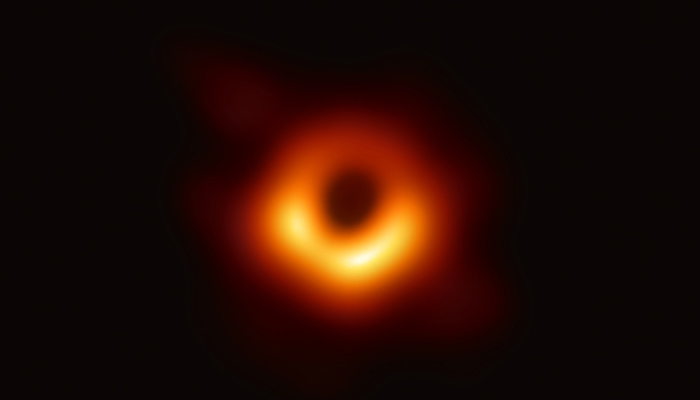EHT Collaboration
If you haven’t already seen the incredible image, the first ever photo of an actual black hole was released Wednesday.

The image comes from the Event Horizon Telescope (EHT), which is actually an array of telescopes situated around the globe.
When the astronomers initially announced releasing the results of their work, many suspected it’d be our own galaxy’s Sagittarius A. However, the black hole pictured is, in fact, from the Messier 87 galaxy.
The black hole in M87 is approximately three million times the size of our home planet – 40 billion kilometers wide. At least one scientist even described it as “a monster.”
That scientist would be Professor Heino Falcke of the Netherland’s Radboud University, the very astrophysicist who initially proposed the experiment. On Wednesday, he discussed the project’s findings with the BBC.
“What we see is larger than the size of our entire Solar System,” Falcke said. “It has a mass 6.5 billion times that of the Sun. And it is one of the heaviest black holes that we think exists. It is an absolute monster, the heavyweight champion of black holes in the Universe.”
A network of eight telescopes were used to photograph the behemoth, which is 500 million trillion km away from Earth.
“We have seen the gates of hell at the end of space and time,” said Falcke during a press conference. “What you’re looking at is a ring of fire created by the deformation of space-time. Light goes around, and looks like a circle.”
The image proves what many have suspected with regards to how a black hole would actually appear.
“It is remarkable that the image we observe is so similar to that which we obtain from our theoretical calculations. So far, it looks like Einstein is correct once again,” said the University College London’s Dr. Ziri Younsi, who was also involved in the collaborative effort.
The Event Horizon Telescope project involved more than 200 researchers from around the world, working for over a decade. By combining the power of multiple radio telescopes, they effectively created a giant virtual telescope about the size of Earth.
It was no small feat getting funding for the project either, but now Falcke finally feels the investment’s been vindicated.
“It has been a long journey,” he said, “but this is what I wanted to see with my own eyes. I wanted to know is this real?”